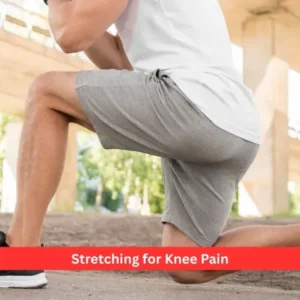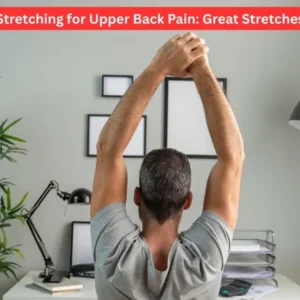Step-ups are one of the elementary forms of exercises that involve the lower part of the body since they recruit many muscles during the movements. This compound movement consists of rising to a platform that is higher in height than the performer with one foot, and extending to reach the platform with the other foot. Step-ups not only build your lower body with an emphasis on the quads, hamstrings, hip, and calf region but also enhance balance and coordination. No matter what your exercise goals are: Whether you are sporty and trying to get skinny legs or muscly and aiming for functional exercises, the Step-ups are wonderful to include in your lower body training.
You can visit our previous article on high impact vs low impact exercises if you really wanna do it.
Anatomy and movement of the lower body
- Developing knowledge of the parts of your lower body is essential in helping you recognise the value of the exercise known as Step-Ups. Tying back to the exercise, muscles involved in this type of workout include the quads, hamstrings, gluteal group and the calf muscles.
- Muscles of the anterior thigh: quadriceps; these are the muscles in the front part of the thigh that extend the knee. The hip bones are extended by the glutes, while the Calf muscles flex the feet joint, which is the ankle. Tendons that connect these muscles allow ease of movement in addition to balance during step-ups and are among the best muscle groups suited for exercising and building the lower body.
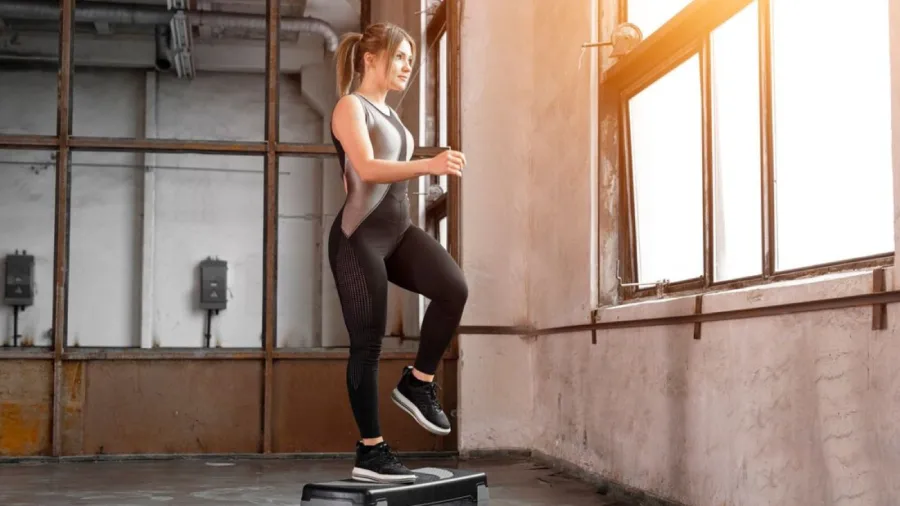
Benefits of Step-ups
Improves leg strength
- Muscle Work: As hinted earlier, step-ups can be classified as a unilateral movement since they work a single limb at a time. They aid in countering a situation where one of the legs might be developed than the other leg, hence leading to inequality. One must note that the primary muscles targeted are the quads, which are found at the front of the thighs, the hamstring muscles at the back of the thighs and the glutes, which are present at the buttocks. Step-ups also involve lifting presses on your calf muscles and even your stabiliser muscles to balance your body weight. As such, a person must exert some effort on all the leg muscles to enhance their balance.
- Multifacility: Step-ups also work in several joints and muscles, unlike the isolated joint compound movement. It makes them more efficient than isolation exercise, which refers to movements that involve only one joint, which affects just one muscle area.
Improves balance and coordination
- Step-ups: Step-ups help in improving balance since one has to place most of his/her body weight on one leg. It also assists in proprioception, which aims at sensing the position of one’s body in space, which is a critical factor in preventing falls among the elderly. Failure to ensure that the left and right knees are aligned while doing step-ups is dangerous since it will lead to poor posture.
- Coordination: The exercise mainly targets coordination of the upper and lower body, especially where weights are used or where more complex exercises, such as lateral or reverse step-up, are involved.
Accessibility and versatility
- Few Equipment Exercises: Another advantage of doing step-ups is that it requires little equipment, like other exercise equipment. A strong chair or bench, or box should be adequate. This makes it possible for the exercise to be done from the comfort of one’s home or while travelling.
- Feb 26, 2010 The exercises provided allow a certain level of flexibility to be easily done, depending on the fitness level of the individual. New users use a lower bench for bodyweight step-ups, while the advanced users incorporate dumbbells, barbells or resistance bands, and perform explosive movements such as jumping motions in the bench step-ups.
Calorie Burning and Cardiovascular Benefits
- A compound movement that targets the thigh muscle, the step-up has metabolic demand, hence facilitates high calorie expenditure during the training sessions, making it a calorie-burning exercise.
- You can add step-ups into a circuit to add some cardiovascular or increase the intensity to meet that purpose; this will need strengthening.
Injury Prevention and Rehabilitation
- Joint Friendly: Step-ups are therefore less demanding on the joints as compared to other high-impact exercises such as running or jumping. Thus, they are ideal for those patients suffering from knee or hip issues.
- It can be done in a controlled manner and with the amount of resistance being easily regulated; thus, it is widely utilised in rehabilitation processes to strengthen muscles and stabilise joints in case of injuries.
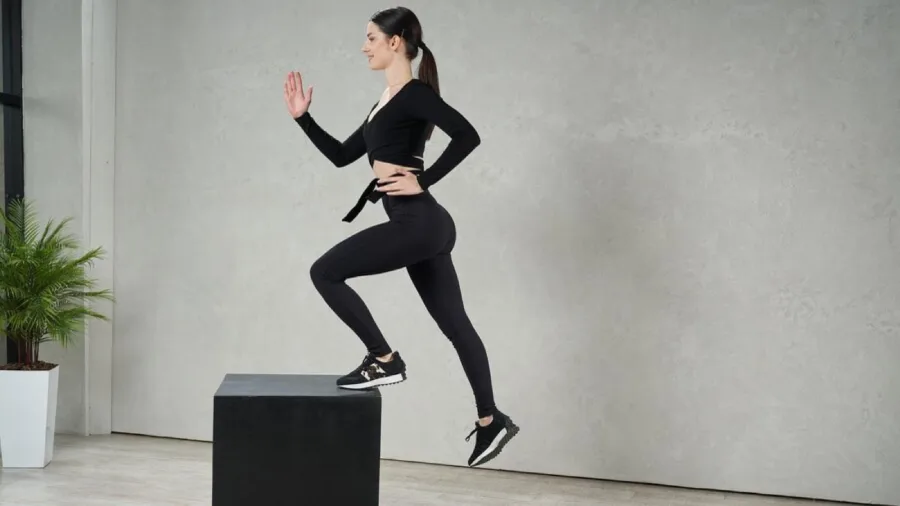
How to Do Step-Ups with Proper Technique
To get the most out of this type of exercise and avoid potential harm, it is necessary to perform step-ups in proper form. Here are some simple guidelines that will enable you to do them to the best of your abilities:
- Place your feet as wide as your shoulders, at least one step backwards from the platform.
- As a result, the right foot should be placed on the platform or the step, and your other foot is to be placed on the ground.
- Push the right heel to start moving your upper body up, and try to place your left foot on the platform so that it comes close to your right foot.
- Then move back to the initial position with the left foot, and then place your right foot.
- But for the next exercise, you should work on flipping the legs’ exercise so that they will be performed in turns.
It is recommended to stand with your feet as wide as your hips and try to perform all movements in a slow and controlled manner, which will lead to the strengthening of all the muscles of the region.
Common Mistakes to Avoid in Step-Ups
As you will soon learn, step-ups as an exercise might be easy to perform, but they can be executed in several wrong ways that may lead to injuries. It is also important to have a keen eye on the following things:
- Putting the knee beyond the toes: This is a wrong posture that puts pressure on your knee joint in the wrong way. Your knee must also remain in the same position as your toes are in every moment of the dance.
- Don’t keep your back straight: This again will result in the formation of bad posture that may cause problems regarding the back.
- You should not involve your abdomen: Abdominal muscles are responsible for fixing the body during movement. Ensure that your core is strong to enable proper balance and flow while performing this exercise.
- Do not advance with the heel of the foot: This exertion puts pressure on the calf muscles. Also, skin the shot through with the heel to get a good contract on the glutes and hamstrings muscles.
- Don’t raise your second leg and touch your first leg: As the movements are performed, a perfect touch of the two feet should take place on the platform.
The following preeminent articles also demonstrate the best technique for step-ups, namely the diagonal step-up and the reverse step-up, while at the same time avoiding some of the leading mistakes that may lead to injuries during the performance of this lower-body exercise.
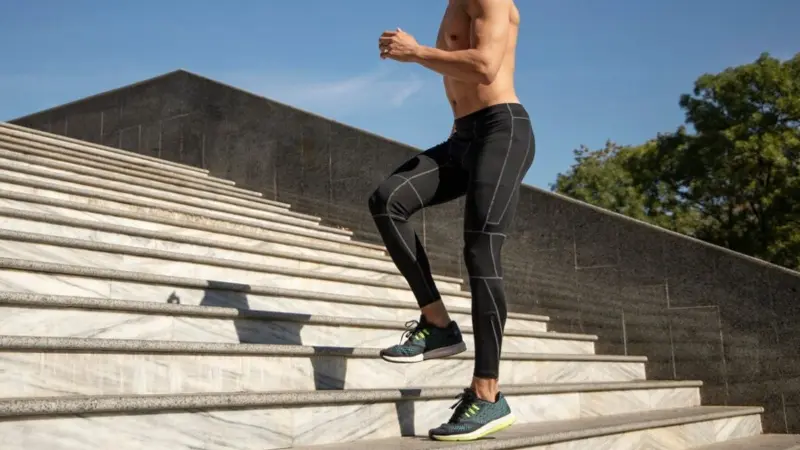
Tips for Optimal Performance: Engaging Your Lower Body Muscles
- Begin with low Risers: If you are just beginning in step-ups or doing strength training, then better to try with the lower platform and without lifting any weights. Since you are required to stamp at one point, you need to be balanced, and this is why spreading your feet about shoulder-width apart will help you. As one gets accustomed to the new form of training, one should slowly add height to the platform and the weights.
- Concentration on execution: Special attention has to be paid to it to prevent injury and see the maximum effect of the technique. It is recommended to maintain the shins parallel to the feet, the back straight, and the abdominal muscles also stiff. However, keep a shoulder-width distance as it can help you maintain balance.
- Progress: Explaining the higher degree of training: As the strength increases, one must raise the height of “step-ups”, or add weights or add dynamic movements such as “jumping jacks”.
Pay heed to your body; if it grows painful, most especially in joints, you must review your form. Perhaps, its power should be diminished, or it is advisable to ask a fitness expert to work with such individuals. Muscle Training: Incorporate step-ups in a muscle workout session that incorporates upper body, core and flexibility exercises to ensure balanced physical training.
Step-ups, as a form of exercise, are very useful for upper and lower limbs development as well as balance and calorie loss. So whether one is a first-time person in the gym or a professional in athletic activities, step-up exercises can be done at the degree of the ability of person or per Individual training goals/programs. For this reason, if you include them in your entire programme of exercises, you will benefit in terms of fitness, not only will they also aid in the enhancement of motor control, making everyday activities easier and a lot less hazardous.
Solution
It’s exciting to include step-ups in your lower body workout, and the advantages of this exercise are as follows: Step-ups strengthen lower body muscles by engaging several muscles in the body during the exercise. They should, however, be performed in the right manner to avoid any injury as well as to ensure their efficiency. You can avail the advantage of step-ups to adjust the form and make your daily activities easier and efficient in your lower body exercises.
Frequently Asked Questions
1. What muscles do step-ups work?
Step-ups mainly focused on the quadriceps, hamstrings and glutes, together with the calf muscle group. Since it is a compound movement, it also involves the use of stabiliser muscles, hence improving stability and coordination.
2. Are step-ups suitable for beginners?
Yes, step-ups are highly adaptable. For the beginners, the starting position must be on a lower height and even the body weight; thus, as they grow taller, strength and balance add weight, such as that of dumbbells.
3. How can I avoid injury while doing step-ups?
Do not flex your knee over the toes, use your stomach muscles, and do not lean forward. While biking, one should always pull on the pedals with control, and the heel should push the ground while the knee should not go further than the toes.
4. Can step-ups improve balance and coordination?
Absolutely. The exercise involves lifting the body with one leg at a time and therefore makes it an excellent form of exercise for building unilateral strength, body awareness or proprioception and stability, ty thus helping in reducing the chance of falling and enhancing functional fitness.





